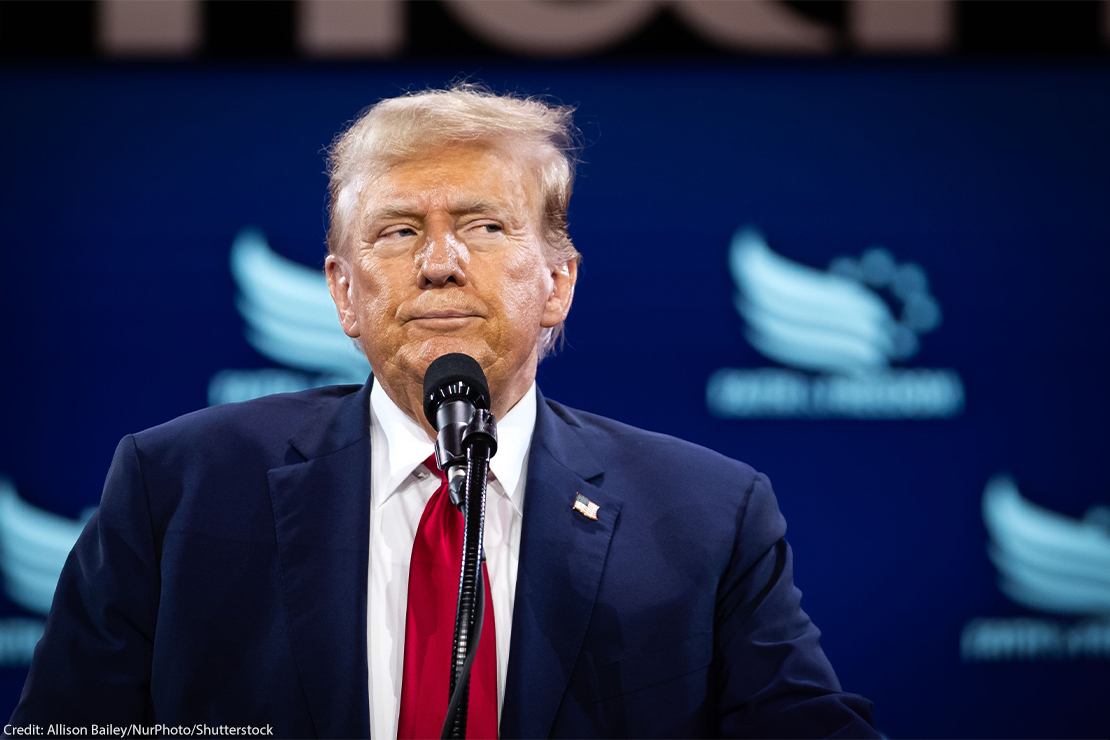China’s De-Dollarization Drive: Progress, Plans, and Global Implications
China has been steadily advancing a de-dollarization strategy aimed at reducing its reliance on the U.S. dollar in global trade and finance. This multi-faceted effort is driven by a mix of geopolitical strategy, economic security, and protection from Western sanctions. Below is a comprehensive assessment of what China has done so far, what it plans next, and the broader implications of its shift.
Key De-Dollarization Efforts So Far
1. Growing Use of the Yuan in Trade Settlements
-
China has aggressively promoted the use of the yuan (RMB) in cross-border trade. As of March 2024, 52.9% of China’s cross-border payments were settled in yuan, overtaking the U.S. dollar (42.8%) for the first time.
-
Bilateral trade with Russia, Brazil, and Saudi Arabia increasingly uses local currencies. Two-thirds of China-Russia trade is now settled in yuan or rubles. Saudi Arabia signed a $6.93 billion currency swap deal with China in 2023.
-
Globally, the yuan’s share in trade finance has grown to around 5%, doubling since 2021. However, it still lags far behind the dollar, which is involved in 88% of all global foreign exchange transactions.
2. Reducing Exposure to U.S. Treasuries
-
China has been gradually offloading U.S. Treasury securities—down 17% between 2015 and 2022, with some estimates putting the reduction as high as 27%.
-
These funds are being reallocated into gold, other foreign currencies, and domestic assets, reducing the risk of sanctions or asset freezes.
3. Building Alternative Financial Systems
-
China’s Cross-Border Interbank Payment System (CIPS) is positioned as a yuan-based alternative to the SWIFT network. It now facilitates transactions for sanctioned nations like Russia.
-
The digital yuan (e-CNY) is being trialed across ASEAN and Middle Eastern countries for cross-border payments, enabling faster settlements outside dollar-based systems.
-
China is exploring regional financial structures, such as a Shanghai Cooperation Organisation (SCO) Development Bank and Sino-Russian financial alliances, to promote local currency integration.
4. Strategic Gold Accumulation
-
China, alongside countries like Russia and Türkiye, has significantly increased gold reserves, which now represent a larger share of foreign exchange holdings.
-
Across emerging markets, gold reserves have doubled from 4% to 9% over the past decade, as a hedge against fiat currency risks and Western monetary policy shocks.
5. Regional & BRICS-Led De-Dollarization Initiatives
-
Through forums like BRICS and the SCO, China is advocating for local currency trade and has backed discussions on launching a BRICS settlement currency.
-
China’s Belt and Road Initiative (BRI), once dominated by dollar-denominated loans, is shifting toward yuan-based financing to reduce dollar dependency.
6. Managing the Yuan Through Devaluation and Controls
-
China has occasionally devalued the yuan—such as during the 2015 currency shock and COVID-19 pandemic—to maintain export competitiveness.
-
However, capital controls remain tight, limiting global convertibility and impeding broader international adoption.
Future De-Dollarization Plans
1. Expanding Yuan Internationalization
-
China intends to grow yuan adoption in global trade without fully liberalizing capital markets.
-
Initiatives include extending yuan trading hours and promoting yuan settlements in energy and commodity markets. A notable milestone: China completed its first yuan-settled LNG trade with France in 2023.
2. Enhancing Regional Financial Infrastructure
-
China is investing in CIPS and the digital yuan’s cross-border capacity, targeting deeper integration with ASEAN and Middle Eastern economies.
-
Proposals for an SCO Development Bank and a BRICS currency settlement platform are being actively discussed.
3. Deepening Collaboration with BRICS and SCO
-
China will continue to encourage BRICS and SCO members to increase trade in yuan and work toward a common currency or valuation mechanism.
-
Nations such as Egypt and Algeria have already begun exploring yuan-based transactions.
4. Reserve Diversification
-
Further divestment from U.S. Treasuries is expected, with China likely increasing holdings in gold and other stable foreign currencies like the euro.
5. Scaling Digital Yuan Adoption
-
Expansion of the digital yuan will focus on Belt and Road projects, cross-border trade, and sovereign fintech collaboration—bypassing U.S.-dominated systems such as SWIFT.
Leverage as the World’s Largest Trading Partner
China’s position as the top trading partner for over 120 countries gives it significant geopolitical and financial leverage:
1. Influence in Trade Negotiations
-
China can push for yuan-based settlements, especially with countries reliant on Chinese imports and exports. Russia, Brazil, and Saudi Arabia are early adopters.
2. Economic Dependency
-
Countries like Argentina and Russia, facing dollar shortages or sanctions, are turning to the yuan to preserve trade access.
3. Geopolitical Clout
-
Through BRICS and SCO platforms, China is building a coalition to advance de-dollarization as a strategy to counter Western financial dominance.
4. Stability in Trade Corridors
-
Promoting yuan-based trade provides greater stability for China’s exporters, especially in volatile or sanctioned markets.
Projected Milestones: 2025–2035
Here’s what China may accomplish in the next 10 years:
1. Global Trade Finance
-
The yuan’s share in global trade finance may grow from 5% to 10–15% by 2035, with broader use in BRICS, ASEAN, and Middle Eastern trade.
2. Payment System Expansion
-
CIPS could become a mainstream alternative to SWIFT, particularly in Global South transactions.
-
The digital yuan may handle 10–20% of China’s cross-border payments, particularly in BRI trade.
3. BRICS Currency Platform
-
A BRICS-wide currency or settlement framework could reduce intra-bloc dollar usage by 20–30%, bolstering regional economic autonomy.
4. Reserve Composition Shift
-
China's gold reserves may double by 2035, while U.S. Treasury holdings could fall below $500 billion.
5. Financial Hub Development
-
Shanghai and Hong Kong could emerge as key regional financial centers for yuan-denominated trade, challenging New York and London.
Can the World Become Truly Multipolar in Currencies by 2035?
A true multipolar currency world—where multiple currencies rival the U.S. dollar—is unlikely within a decade, but trends are moving in that direction.
1. Entrenched Dollar Dominance
-
The U.S. dollar still accounts for 88% of global FX transactions and 59% of central bank reserves. The yuan holds just 7% and 2.5%, respectively.
2. Structural Challenges in China
-
Yuan internationalization is held back by capital controls, limited convertibility, and China’s opaque monetary policy.
-
Domestic economic risks, including real estate instability and demographic decline, further slow adoption.
3. Emerging Multipolar Trends
-
A realistic outcome is a fragmented global system: the yuan gaining traction in Asia and Africa, the euro dominating Europe, and the dollar holding global primacy.
-
Regional currency blocs may form around BRICS and SCO nations.
4. Timeline to Multipolarity
-
By 2035, the yuan may emerge as a dominant currency in Asia and the Global South—but not a global peer to the dollar. A fully multipolar system may take 15–20 years, depending on reforms and geopolitical alignment.
Implications of a Multipolar Currency World
Economic Effects
-
Volatility: Multiple currency systems could increase transaction costs and FX volatility.
-
Declining U.S. Leverage: Less global use of the dollar would reduce the efficacy of U.S. sanctions.
-
Trade Regionalization: Trade blocs may become more insular, reducing global economic cohesion.
-
Debt Market Disruption: Large-scale Chinese divestment from U.S. debt could shock U.S. financial markets.
Geopolitical Consequences
-
Shift in Power: A yuan-led system would expand China’s soft power, especially in the Global South.
-
Sanctions Evasion: Countries like Russia, Iran, and Venezuela may increasingly bypass Western controls.
-
Strengthened Alliances: China-led blocs like BRICS and SCO would grow more cohesive and autonomous.
-
Escalation Risks: U.S. backlash—such as aggressive tariffs or sanctions—could inflame trade wars and fragment the global order.
Risks for China
-
China’s deep financial interlinkage with the U.S. may make it vulnerable to retaliatory sanctions.
-
Without capital account liberalization, yuan convertibility will remain limited, stalling progress.
Conclusion
China’s de-dollarization campaign is gaining ground, marked by increased yuan trade settlement, infrastructure development like CIPS, and growing gold reserves. As the world’s largest trading partner, China is leveraging its position to reshape global finance—regionally if not yet globally.
While the dollar is unlikely to be dethroned in the short term, the next decade could see a more regionalized currency landscape, with the yuan establishing itself as a major player across Asia, Africa, and parts of Latin America. A truly multipolar currency system could emerge by 2040, but it would carry economic volatility, geopolitical tension, and structural uncertainty as the global financial order is redefined.
चीन की डेडॉलराइजेशन रणनीति: प्रगति, योजनाएं और वैश्विक प्रभाव
चीन अमेरिका डॉलर पर अपनी निर्भरता को कम करने के लिए एक सुव्यवस्थित डेडॉलराइजेशन रणनीति पर काम कर रहा है। यह रणनीति भू-राजनीतिक रणनीति, आर्थिक सुरक्षा, और पश्चिमी प्रतिबंधों से सुरक्षा की दृष्टि से संचालित हो रही है। इस लेख में अब तक की प्रगति, भविष्य की योजनाएं, और इसके वैश्विक प्रभावों का विस्तृत मूल्यांकन प्रस्तुत है।
अब तक के प्रमुख प्रयास
1. व्यापारिक लेनदेन में युआन का बढ़ता प्रयोग
-
मार्च 2024 तक, चीन के 52.9% सीमा-पार भुगतान युआन में निपटाए गए, जो पहली बार अमेरिकी डॉलर (42.8%) से अधिक था।
-
रूस, ब्राज़ील और सऊदी अरब जैसे देशों के साथ द्विपक्षीय व्यापार अब स्थानीय मुद्राओं में हो रहा है। चीन-रूस व्यापार का दो-तिहाई हिस्सा युआन या रूबल में होता है।
-
वैश्विक व्यापार वित्त में युआन की हिस्सेदारी 5% तक बढ़ गई है (2021 में यह लगभग 2.5% थी), हालांकि यह अभी भी डॉलर की 88% हिस्सेदारी से बहुत पीछे है।
2. अमेरिकी ट्रेजरी बॉन्ड में निवेश घटाना
-
2015 से 2022 के बीच, चीन ने अमेरिकी ट्रेजरी बॉन्ड होल्डिंग्स में लगभग 17% की कटौती की। कुछ आकलनों में यह 27% तक बताई गई है।
-
यह पूंजी अब सोने, अन्य मुद्राओं और घरेलू परिसंपत्तियों में निवेश की जा रही है, जिससे डॉलर-आधारित प्रतिबंधों से सुरक्षा मिल सके।
3. वैकल्पिक वित्तीय प्रणाली का विकास
-
CIPS (क्रॉस-बॉर्डर इंटरबैंक पेमेंट सिस्टम) को SWIFT का युआन-आधारित विकल्प बनाया गया है, जिसमें अब रूस जैसे प्रतिबंधित देशों के बैंक शामिल हैं।
-
डिजिटल युआन (e-CNY) ASEAN और मध्य पूर्वी देशों में परीक्षणाधीन है, जो तेजी से भुगतान में मदद करता है और SWIFT को बायपास करता है।
-
क्षेत्रीय वित्तीय गठबंधनों जैसे SCO डेवलपमेंट बैंक और सिनो-रशियन फाइनेंशियल एलायंस की परिकल्पना चल रही है।
4. सोने का रणनीतिक संचय
-
चीन ने रूस और तुर्की के साथ मिलकर सोने की खरीद में वृद्धि की है।
-
उभरती अर्थव्यवस्थाओं में सोने का हिस्सा 10 वर्षों में 4% से बढ़कर 9% हो गया है, जिससे मुद्रा अस्थिरता के जोखिम को संतुलित किया जा सके।
5. क्षेत्रीय और BRICS पहल
-
BRICS और SCO जैसे मंचों के माध्यम से चीन स्थानीय मुद्राओं में व्यापार को बढ़ावा दे रहा है और BRICS मुद्रा या भुगतान व्यवस्था की चर्चा में आगे है।
-
बेल्ट एंड रोड इनिशिएटिव (BRI) में पहले डॉलर में ऋण दिए जाते थे, लेकिन अब युआन में वित्तपोषण बढ़ाया जा रहा है।
6. मुद्रा अवमूल्यन और पूंजी नियंत्रण
-
2015 और कोविड-19 महामारी के दौरान युआन को निर्यात के लिए प्रतिस्पर्धी बनाने हेतु अवमूल्यन किया गया।
-
हालांकि, कठोर पूंजी नियंत्रणों के कारण युआन की वैश्विक स्वीकार्यता सीमित है।
आगामी रणनीतियाँ
1. युआन का अंतर्राष्ट्रीयकरण
-
चीन वैश्विक व्यापार में युआन की भूमिका को बढ़ाना चाहता है, जबकि पूंजी खाता अभी भी नियंत्रित रहेगा।
-
ऊर्जा और वस्तु बाजारों में युआन-सेटलमेंट को प्रोत्साहित किया जा रहा है, जैसे 2023 में फ्रांस के साथ युआन में LNG सौदा।
2. क्षेत्रीय वित्तीय अवसंरचना को मजबूत करना
-
CIPS और डिजिटल युआन को ASEAN और मध्य पूर्व में बढ़ाया जाएगा, जिससे वैश्विक व्यापार के 38% हिस्से को कवर किया जा सके।
-
SCO विकास बैंक या BRICS मुद्रा मंच की स्थापना की संभावनाएं हैं।
3. BRICS और SCO सहयोग को गहरा करना
-
अधिक BRICS देशों को युआन व्यापार में शामिल करने और एक सामान्य मुद्रा या मूल्य संदर्भ प्रणाली स्थापित करने की योजनाएं हैं।
-
मिस्र और अल्जीरिया जैसे देश पहले ही युआन-सेटलमेंट में रुचि दिखा चुके हैं।
4. भंडार में विविधता लाना
-
अमेरिकी ट्रेजरी बॉन्ड में और कटौती तथा सोना और यूरो जैसे अन्य मुद्राओं में निवेश की संभावना है।
5. डिजिटल युआन का विस्तार
-
विशेष रूप से BRI परियोजनाओं में डिजिटल युआन के माध्यम से भुगतान प्रणालियों का विस्तार किया जाएगा।
दुनिया के सबसे बड़े व्यापारिक साझेदार के रूप में चीन की ताकत
चीन, जो 120 से अधिक देशों का सबसे बड़ा व्यापारिक साझेदार है, उसके पास डेडॉलराइजेशन के लिए रणनीतिक प्रभाव है:
1. व्यापार शर्तों पर प्रभाव
-
चीन व्यापार समझौतों में युआन में भुगतान की शर्तें रख सकता है, जैसा कि रूस, ब्राज़ील और सऊदी अरब के साथ हुआ है।
2. आर्थिक निर्भरता
-
अर्जेंटीना और रूस जैसे देश डॉलर संकट या प्रतिबंधों के चलते युआन की ओर रुख कर रहे हैं।
3. भू-राजनीतिक लाभ
-
BRICS और SCO के माध्यम से चीन एक नया वित्तीय गठबंधन बना रहा है, जिससे अमेरिका के वित्तीय वर्चस्व को चुनौती मिल रही है।
4. निर्यात स्थिरता
-
युआन-आधारित व्यापार चीन के लिए अधिक स्थिर निर्यात वातावरण सुनिश्चित करता है, खासकर प्रतिबंधित बाजारों में।
2025–2035: अनुमानित मील के पत्थर
1. वैश्विक व्यापार वित्त में युआन की हिस्सेदारी
-
2035 तक युआन की हिस्सेदारी 5% से बढ़कर 10–15% हो सकती है।
2. भुगतान प्रणाली में वृद्धि
-
CIPS एक वैश्विक SWIFT विकल्प बन सकता है।
-
डिजिटल युआन BRI और ASEAN व्यापार में 10–20% क्रॉस-बॉर्डर भुगतान संभाल सकता है।
3. BRICS मुद्रा ढांचा
-
BRICS में डॉलर उपयोग 20–30% तक घट सकता है।
4. भंडार विविधीकरण
-
चीन के सोने के भंडार दोगुने हो सकते हैं, और अमेरिकी ट्रेजरी होल्डिंग्स $500 बिलियन से नीचे जा सकती हैं।
5. क्षेत्रीय वित्तीय केंद्रों की स्थापना
-
शंघाई और हांगकांग जैसे शहर युआन-आधारित वैश्विक वित्त केंद्र बन सकते हैं।
क्या 2035 तक बहुध्रुवीय मुद्रा व्यवस्था संभव है?
1. डॉलर का प्रभुत्व अभी कायम
-
अमेरिकी डॉलर 88% विदेशी मुद्रा लेन-देन और 59% केंद्रीय बैंक भंडार में मौजूद है, जबकि युआन की हिस्सेदारी केवल 7% और 2.5% है।
2. चीन की आंतरिक सीमाएं
-
पूंजी नियंत्रण, विनिमय दर प्रबंधन, और पारदर्शिता की कमी युआन के लिए बाधाएं हैं।
3. उभरती बहुध्रुवीय प्रवृत्तियाँ
-
एशिया और अफ्रीका में युआन, यूरोप में यूरो, और वैश्विक स्तर पर डॉलर — इस प्रकार एक क्षेत्रीय मुद्रा प्रणाली संभव है।
4. समयसीमा
-
2040 तक बहुध्रुवीय व्यवस्था आकार ले सकती है, लेकिन पूर्ण वैश्विक प्रतिस्पर्धा के लिए चीन को बड़े आर्थिक और नीतिगत सुधार करने होंगे।
बहुध्रुवीय मुद्रा व्यवस्था के प्रभाव
आर्थिक प्रभाव
-
मुद्रा अस्थिरता: व्यापार लागत में वृद्धि और हेजिंग की ज़रूरतें।
-
अमेरिकी वित्तीय दबदबे में गिरावट: प्रतिबंधों की क्षमता में कमी।
-
क्षेत्रीय व्यापार प्रणाली: वैश्विक एकता में बाधा।
-
अमेरिकी ऋण बाजार में झटका: चीन की बॉन्ड बिक्री से अमेरिकी बाज़ार प्रभावित हो सकता है।
भू-राजनीतिक प्रभाव
-
शक्ति संतुलन में बदलाव: चीन का वित्तीय प्रभाव बढ़ेगा।
-
प्रतिबंधों से बचाव: रूस, ईरान जैसे देश युआन प्रणालियों का उपयोग कर सकते हैं।
-
BRICS/SCO गठबंधनों की मजबूती: चीन की अगुवाई में नए वैश्विक गठबंधन उभर सकते हैं।
-
अमेरिकी प्रतिक्रिया: जैसे कि 100% टैरिफ प्रस्ताव — व्यापार युद्ध को जन्म दे सकते हैं।
चीन के लिए जोखिम
-
अमेरिकी वित्त प्रणाली से गहराई से जुड़ा होने के कारण चीन पर प्रतिशोधात्मक प्रतिबंध लगाए जा सकते हैं।
-
पूंजी खाता स्वतंत्रता के बिना युआन की सीमित स्वीकार्यता बनी रहेगी।
निष्कर्ष
चीन की डेडॉलराइजेशन रणनीति — युआन व्यापार, भुगतान अवसंरचना, और भंडार विविधीकरण के माध्यम से — तेज़ी से आगे बढ़ रही है। 2035 तक युआन एशिया और अफ्रीका में एक क्षेत्रीय प्रमुख मुद्रा बन सकता है, जबकि BRICS एक स्थानीय मुद्रा सेटलमेंट ढांचा तैयार कर सकता है। लेकिन अमेरिकी डॉलर का वैश्विक प्रभुत्व अपनी नेटवर्क शक्ति और चीन की पूंजी नियंत्रण नीति के कारण कायम रहेगा।
2040 तक बहुध्रुवीय मुद्रा प्रणाली संभव है, परंतु यह एक अस्थिर, विभाजित और प्रतिस्पर्धी वैश्विक वित्तीय परिदृश्य को जन्म दे सकती है — जिसमें टैरिफ, प्रतिबंध, और मुद्रा युद्धों की संभावना बनी रहेगी।







